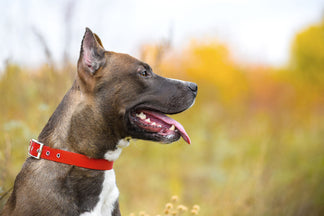We often write about healthy eating and the importance of exercise for your pet. As your pets age, getting them the right amount of exercise can be a challenge. Arthritis slows them down and illness may keep them housebound. But, just as it is for humans, it’s essential for their health and longevity to keep them moving and as active as possible.
Today we want to offer a few suggestions for moderate impact exercises for your senior pets. These are exercises you can do with your pets to help keep them active without injury or fatigue.
1. Walk: Yes, walking is still good for pets with arthritis. It helps keep their joints fluid and limber just by a leisurely walk around the block. Several short walks a day are better than one long one, so rearrange your time to get 3 – 4 walks in a day.
2. Swim: Swimming is an excellent activity whether your pup is young or old. It’s great for humans too! The buoyancy of the water takes much of the pressure off the limbs, so your dog can swim without the constant jarring to the joints that happens when they run or walk. Swimming can help build cardiovascular strength as well as muscle strength. If your dog isn’t a swimmer, just walking in the water helps build muscle strength in their legs and core.
3. Cross train: There are lots of strength building exercises you can do with your senior dog. A simple one is walking uphill. It can help strengthen weaker hind quarters or front limbs depending on whether you are going up or down hill. Climbing stairs is also a good leg strengthener, just be sure they aren’t slippery.
A balance cushion can be used to help strengthen their core. Place their front paws on the cushion (you can use your sofa too) and gently nudge their hind end. They will have to engage their core to stay upright.
4. Range of Motion: These exercises can help your dog maintain the range of motion in their neck and back. Have your dog sit or lie down facing you. With a high value treat move your hand from in front of their face around to the side so that the have to turn their head to see it. Move it back around and to the other side. They need to remain seated. You can advance on this by having them stand and do a full body twist to follow and hopefully get the treat.
5. Play: Your dog Is never too old for a few games of fetch, tug or chase. These games may not be formal exercises, but they are certainly activities your dog enjoys and are a key part to a full exercise program designed to keep them in their best condition.
6. Food puzzles: While food puzzles aren’t “cardio” exercises, they are important for your dog’s mental health. It’s just as important to keep their brain active as it is to keep their bodies active, so these types of games are an excellent activity for your aging pup.
A key component to any exercise program is consistency, so you must commit to doing these activities on a regular basis in order to see results. Once a week is not enough, 3-4 times a week is good, but everyday is optimal. Most important is to watch your dog for any signs of fatigue and stop immediately if they seem tired, are panting or consistently lose interest in an activity.
Sources:
https://www.akc.org/expert-advice/health/senior-dog-health/provide-senior-dog-proper-exercise/
https://www.seniortailwaggers.com/exercising-older-dogs/#Therapy_Exercises_For_Senior_Dogs
http://slimdoggy.com/6-exercise-tips-for-senior-dogs/
https://www.wikihow.pet/Exercise-an-Older-Dog




 General
General
 General
General
 General
General
